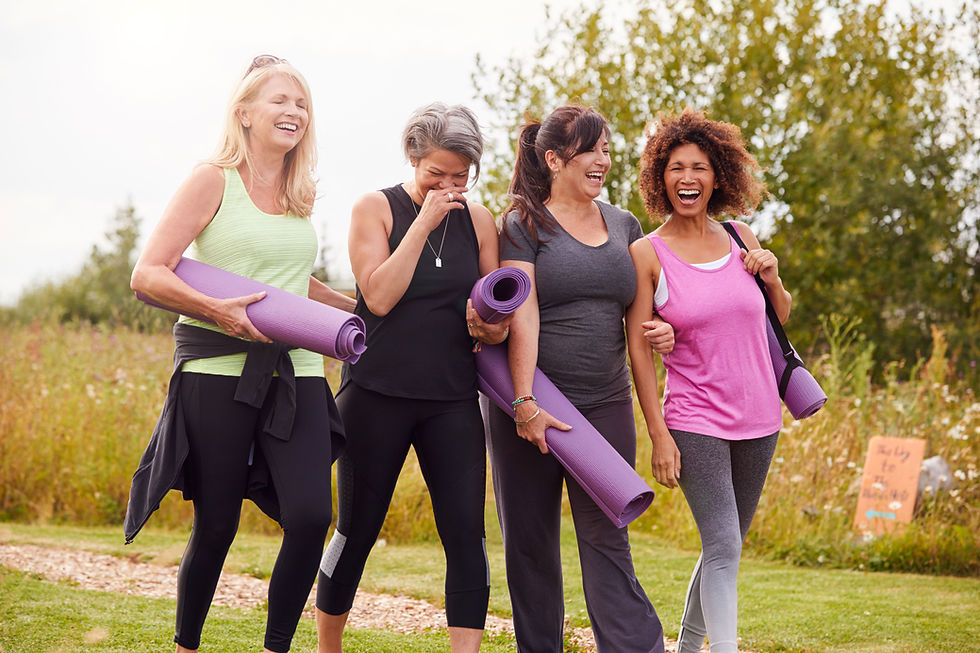Sitting Pretty: The Role of Posture and Ergonomics for MG
- Liz Plowman

- Apr 18, 2024
- 3 min read

Living with Myasthenia Gravis (MG) can present a variety of challenges, but taking control of your posture and ergonomics is one way to improve your daily life, conserve precious energy, and manage symptoms. As a physiotherapist (PT) specializing in MG treatment (and as someone who lives with MG every day, too!), I’m excited to share some tips and insights into how optimizing posture and ergonomics can enhance your well-being.
Why Posture and Ergonomics Matter for MG
Good posture and proper ergonomics can:
Reduce muscle fatigue: By minimizing strain and maintaining balanced muscle activity, you can conserve energy.
Prevent pain and discomfort: Proper alignment reduces pressure on your joints, muscles, and nerves, which can help prevent aches and pains.
Improve breathing and circulation: An aligned spine and optimal trunk position support efficient lung function and better blood flow.
Boost confidence and mood: Feeling good physically often translates into feeling good mentally.
Let's explore some practical ways you can focus on your posture and ergonomics to support your MG management.
Tips for Maintaining Good Posture
Sit with support: When sitting for extended periods, use a chair with proper back support. Adjust the height so your feet rest flat on the ground, and your knees are at a 90-degree angle.
Align your head and neck: Keep your head directly above your shoulders. Avoid leaning your head forward or tilting it to the side for prolonged periods.
Relax your shoulders: Allow your shoulders to drop naturally and avoid hunching them up and forward. (I like to do a few backward shoulder rolls if I feel my shoulders getting too tight.)
Mind your spine: Maintain a neutral spine when sitting or standing. This involves avoiding excessive curving in your lower back or slumping forward.
Adjust your work area: If you spend time at a desk, ensure your monitor is at eye level and about an arm’s length away. Keep your keyboard and mouse close so you can reach them easily.
Use lumbar support: If you find it challenging to maintain an upright posture, consider using a small cushion or towel roll to support the natural curve of your lower back. Place the support at the small of your back right above where a belt would go.
Change positions frequently: Prolonged static postures can lead to muscle fatigue and discomfort. Get up and move around every 30 minutes to an hour.
Ergonomic Adjustments for Your Daily Activities
Optimize your workspace: Whether you work from home or in an office, create an ergonomic workstation with adjustable chairs and desk heights. Invest in a supportive chair if needed.
Ergonomic tools: Consider using ergonomic tools such as a mouse pad with wrist support or a keyboard tray to reduce strain on your arms and wrists.
Supportive footwear: Proper footwear with good arch support is essential for maintaining alignment and posture, especially if you stand for extended periods.
Lifting safely: When lifting objects, use your legs instead of your back and hold items close to your body to reduce strain. Keep the load light and team lift if needed. (Or delegate it out!)
MG-Friendly Exercises to Improve Posture
Chin tucks: Sit or stand upright and gently tuck your chin toward your neck (make a double chin). Hold for a few seconds and repeat. This strengthens your deep neck muscles and helps maintain proper head alignment. Perform 5-10 repetitions as able.
Shoulder blade squeezes: Sit or stand with your arms at your sides. Slowly squeeze your shoulder blades together and hold for a few seconds before releasing. Perform 5-10 repetitions as able.
Core strengthening: Engage your core muscles (abdominals and lower back) with exercises such as the abdominal corset. Sit or stand upright and gently draw your belly button toward your spine ("suck it in"). Hold for a few seconds and repeat. Perform 5-10 repetitions as able. Additionally, sitting on a yoga ball is a great way to work on core stability, support your spine, and improve posture.
Gentle stretches: Stretch your chest, back, and neck to release tension and maintain flexibility. ***NOTE: These exercise suggestions are general suggestions only and should not be construed as medical advice or an individual exercise prescription. Always consult with a qualified healthcare provider before starting any new exercise or movement program. Ask your friendly Physio if you need some help with choosing good MG-friendly core exercises.
Focusing on your posture and ergonomics is an important aspect of managing MG. By making conscious adjustments to your daily activities, you can reduce strain, conserve energy, and improve your overall quality of life. Please feel free to reach out with any questions or help getting started!
Let's work together to keep you moving and feeling your best!

Dr. Liz Plowman, PT, DPT, is an MG-specialized Physiotherapist and the owner of MG Physio, a telehealth Physiotherapy practice exclusively for those living with Myasthenia Gravis (MG).




